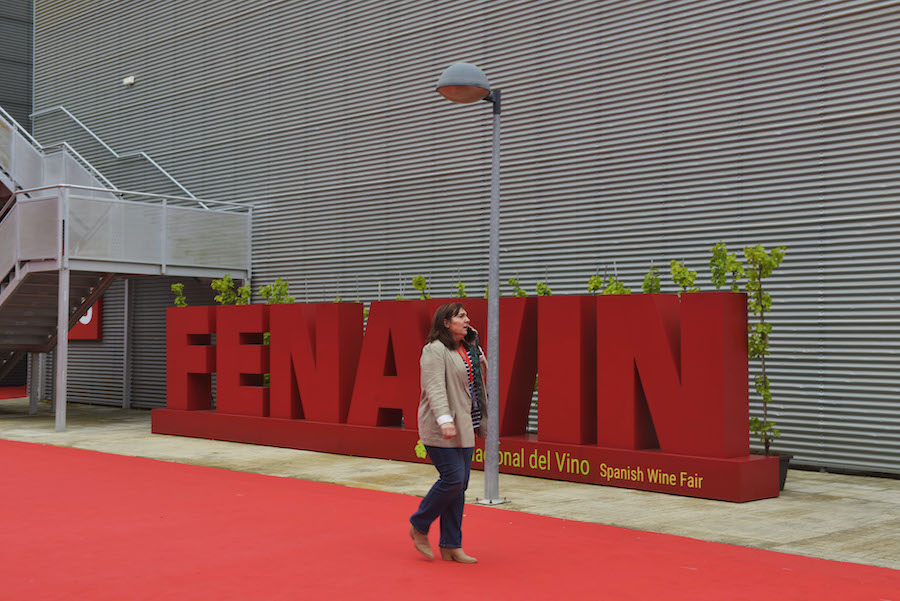Fenavin 2025: Satisfied exhibitors, but attendance numbers disputed

The biennial Fenavin wine fair has become smaller, despite organisers claiming otherwise. Long-time exhibitors and visitors now favour Barcelona Wine Week, held annually in February. "Fenavin used to be a good show to discover new producers, but Barcelona has taken over that role," says Christoph Schönegge of the German wine distributor Deuna, a regular at Fenavin who skipped this year’s edition. "Besides, Ciudad Real lacks the infrastructure to host a fair for such an important wine market as Spain." Tarragona-based wine buyer Christian Pesch of German fine wine distributor Vinaturel was at the fair: "I remember previous editions with many excellent wineries that are now absent. While you can still find very good producers, Fenavin has overall declined in this respect."
Spotlight on Castilla-La Mancha
During Fenavin’s 13th edition, held from 6 to 8 May, SWL spoke to mostly satisfied visitors and exhibitors. "For us, Fenavin is an unmissable event. Part of our wine region lies within Castilla-La Mancha, so we are more in the spotlight here than at other fairs, as many visitors are interested in wines from south of Madrid", says Esther González de Paz of DO Jumilla. Together with Anna Harris-Noble, SWL contributor and Old Vine Conference Ambassador for Spain, the DO hosted a tasting on Jumilla’s heritage of old vines. The region boasts around 1,000 hectares of ungrafted vines.
In total, 83 tastings and panel discussions were held during the three days. One of these, led by SWL journalist Yolanda Ortiz de Arri, explored how different containers impact wine styles. She was joined by winemakers María García (María de la Recueja, Albacete), Pepe Rodríguez de Vera (Alicante and other areas), Lucía Abando (Bodega Las Orcas, Rioja) and Jorge Piernas (Murcia). The confidence these young vignerons displayed when speaking about their projects was impressive, as were their characterful wines. Another tasting, dedicated to La Mancha’s main grape variety Airén, showcased fresh white wines with interesting textures from producers such as García de Lara and Bodegas Verum.
Castilla-La Mancha, the fair’s home region, has a vineyard area of 435,000 hectares. According to Interprofesional del Vino de España (OIVE), 52% of all Spanish wine exports in 2024 came from this autonomous community, at an average price of €0.64 per litre. "We are the largest wine producing region in the world. Wine accounts for 17% of all exports from Castilla-La Mancha," says Luis Quintín Villamayor of IPEX, the region’s foreign trade and investment institute. "Fenavin is very important for our exports. It is important for us to improve the image and value of our wines."
Positive feedback and new markets
In recent editions, the fair’s organisers have prioritised attracting buyers from Africa and Asia. "Our strategy is to pave the way for Spanish wineries into new markets," explained Marie Calderon, Head of the Hosted Buyers Programme. That approach seems to be working. “There are fewer buyers from traditional markets, while Africa, Asia and South America are stronger. That's not a bad thing, because I suppose we all need to expand our markets", says Jürgen Wagner of Celler Capçanes in DO Montsant.
Pablo Cañete, export manager at Bodegas Care in DO Cariñena, whose eponymous town is the European Wine City 2025, was positively surprised. "We expected fewer visitors, but in the end, we had a full agenda and achieved a very good result. Fenavin is interesting because it attracts importers that you might not find at ProWein or in Barcelona.“
Miguel Crunia, from the Scottish wine distributor Fion Wines, was attending Fenavin for the first time. "I was expecting more visitors, however, from a buyer’s perspective, the fair is fantastic. The stands aren't crowded, so there is time to talk to producers and build quality contacts." Jesús Viguera of Bodegas Pujanza, DOCa Rioja, also appreciated the relaxed atmosphere: "Fenavin is very convenient. It is not expensive, the match-making system works really well, and people, most of them professionals, are relaxed. We will come back in two years."
Fenavin’s official figures called into question
Despite the overall positive feedback, several exhibitors and visitors criticised the organiser's official numbers, calling them "dubious" and "unprofessional." They rejected Fenavin's claim that 15,500 domestic and 4,500 international buyers had attended the trade fair. According to one exhibitor, the fair's matchmaking system listed only 564 international buyers.
Fenavin also reported 1,922 exhibiting wineries. However, the exhibitor catalogue recorded just 1,330, including numerous duplicate and even triple entries, as well as hundreds of wineries that were not actually present. For example, the catalogue listed 46 wineries in the DO Vinos de Madrid stand, yet only two wineries were physically present. The other 44 producers listed, among them 4 Monos, Bernabeleva and Comando G, were neither present at the stand nor had wines in any tasting area. A similar situation occurred at the DO Bierzo stand, where the exhibitor catalogue listed 76 wineries, though only six had wines on display.
The real number of exhibitors was therefore significantly lower than the figure given by the organisers. When contacted by Spanish Wine Lover, Fenavin stood by its official figure of 1,922 exhibitors and declined to provide a full list. This lack of transparency does little to bolster the credibility of a fair that, while still important for the region, is starting to show signs that it may need to reinvent itself if it truly wants to remain one of Spain's leading events for wine professionals.

Thomas Götz
Thomas Götz is a wine journalist, blogger and educator based in Spain and Germany. He has been writing about Spanish wines for various German wine magazines since 2016.
Quinta da Muradella Alanda 2021 White
NEWSLETTER
Join our community of Spanish wine lovers






